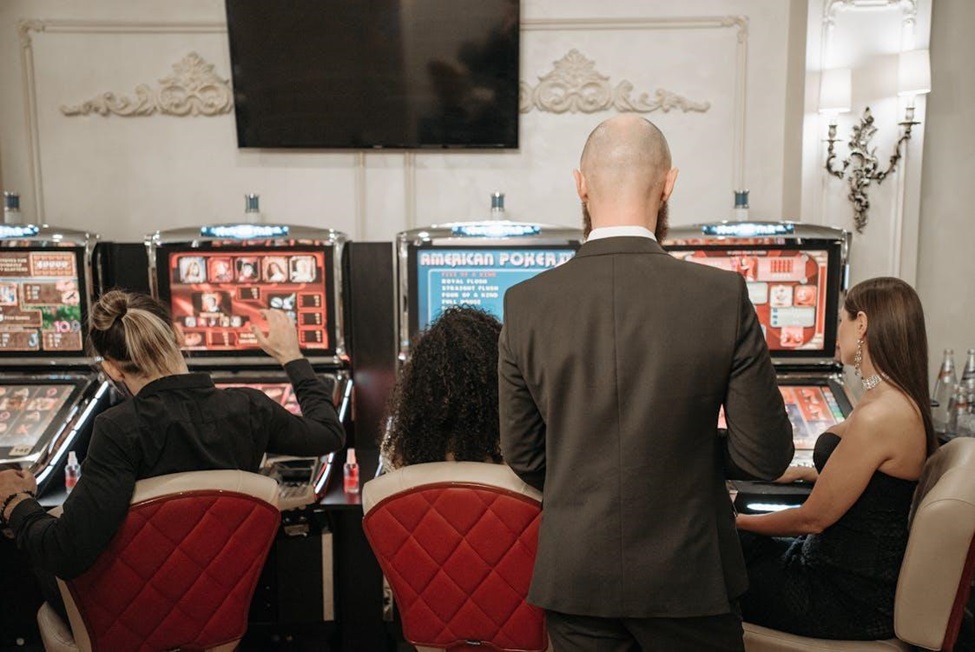
Slot machines have long enthralled gamblers in casinos all over the world with their dazzling lights, spinning reels, and alluring sound effects. But underneath their uncomplicated surface is a sophisticated network of psychological concepts that have been thoughtfully included into their design. Comprehending the intricacies of player interaction with these recognizable gambling machines requires an understanding of the psychology underlying slot machine design.
The Power of Visual and Auditory Stimuli:
The art of sensory engagement is fundamental to the design of slot machines. A symphony of visual and audio cues intended to grab players’ attention and generate excitement is unleashed as soon as they step up to a machine. Bright colors, flashing lights, and lively animations grab the viewer’s attention, and upbeat music and sound effects arouse and build suspense.
Using near-misses is one of the most effective psychological strategies used in slot machine design. In some situations, the reels pause just short of a winning combination, giving the impression that a victory is imminent. According to research, players who experience near-misses are more likely to see them as positive outcomes and continue playing in an attempt to hit the elusive jackpot because they activate the same brain circuits that are linked to winning.
The Role of Reward Systems:
The idea of variable ratio reinforcement, a type of operant training in which rewards are given out at random intervals, is fundamental to the attraction of slot machines. This relates to the unpredictable nature of winnings in slot machines, where players never know when the next payout will take place. Even when players lose often, the exhilaration and anticipation this uncertainty generates keeps them coming back for more.
Moreover, bonus rounds and several lines are common in slot machines online at ABC Paper Writer, both of which increase the possibility of winning bigger payouts. Players may believe that their time spent at the machine is more pleasurable and rewarding than it actually is because of this complexity, which heightens engagement and extends the gaming experience.
Variable Ratio Reinforcement:
The idea of variable ratio reinforcement, a type of operant conditioning in which rewards are given out at random intervals, is fundamental to the construction of slot machines. This indicates that wins in slot machines happen at random and are not dependent on any particular pattern or spin sequence. The excitement and suspense this element of unpredictability generates keeps players interested and wanting more. The chance to win the jackpot is frequently enough to keep gamers spinning the reels in pursuit of that elusive large payout even in the absence of a win.
The Influence of Cognitive Biases:
The design of slot machines also takes use of a number of cognitive biases that affect how people perceive risk and make decisions. The gambler’s fallacy, for instance—the conviction that previous results affect present and future events—may cause players to act irrationally, raising their stake following a string of losses in an attempt to recover their losses.
Similarly, players may overestimate the chance of some events based on how easy they are to recall, a tendency known as the availability heuristic, which can make players assume that certain outcomes are more common than they actually are. This is demonstrated by the way that particular symbols and patterns are purposefully made more memorable in slot machine designs, giving players the impression that they occur more frequently than they actually do.
A fascinating and diverse topic, the psychology of slot machine design illuminates the intricate relationship between gaming technology and human behavior. We can obtain insight into how these recognizable gaming devices affect player interaction and engagement by comprehending the design concepts that guide their creation. The tactics used in slot machine design will change along with the gaming business, guaranteeing that these classic games will continue to be an integral part of casino culture for many years to come.

